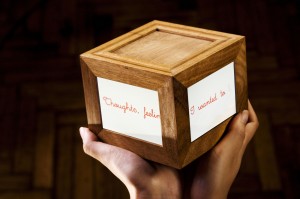Mari Velonaki (artist/researcher) and David Rye (roboticist) from the Centre for Social Robotics give us their perspective on ensuring that the CSR has a model that supports and sustains their research, and allows them scope to continue their future-looking work.
Please describe the centre’s mode of operating?
MV/DR: The Centre for Social Robotics (CSR) is a research centre located within the Australian Centre for Field Robotics (ACFR) at the University of Sydney. The CSR was founded out of the need to create an environment dedicated to understanding how humans can interact with robots (and other technical artefacts) in socially empowered spaces. By this, we mean spaces where people can freely interact with a robot, unlike the constrained environment of a laboratory, and can therefore shift the dynamics of that space. ACFR is a major research centre with more than 170 staff and research students. In turn, the ACFR is the senior partner in the ARC Centre of Excellence for Autonomous Systems. The centre is able to draw upon the resources of ACFR – lab space and facilities, as well as the expertise and knowledge of the broader group.
MV/DR: We see a strong linkage between our strategic direction and our method of operation. Although still in its infancy, we feel that CSR is successful because it is an environment that is open to experimentation and new ideas that are not nesscisarily product based or industry driven. It is an environment where cross-disciplinary collaboration is not only accepted but is embraced as an essential ingredient for the successful realisation of our projects. We also provide opportunities for PhD researchers to pursue unique – and sometimes unusual – projects; a reality check tells us that at this stage we can accommodate only a few, but we are working to increase the numbers in the future.
How many staff members does CSR have? What growth is expected in the next 5 years?
MV/DR: CSR is a team of researchers from a variety of disciplines who are united by their common passion for creating technological interfaces that can help us to understand more about human behaviour in relation to our encounters with technology. At the moment we have about six staff members, although some also have roles within ACFR. We would like to increase our staff numbers to eight over the next five years.
What are the wider goals and strategies of the organisation?
MV/DR: We believe that cross-disciplinary art/science/humanities research in the area of human-machine interaction is crucial, and should be influenced not only by strictly scientific criteria but driven also by social concerns. There are many ethical and legal issues emerging in robotics, and both art and the humanities have a big role to play in focusing the attention of the general public on these issues.
How sustainable is the centre? What structures do you have in place to ensure sustainability?
MV/DR: Sustainability is an issue. As a group within a university we depend to a large extent on research grants, either from the ARC or through collaborative work with industry. As a consequence we can feel “secure” for only the three-to-five year cycle of research grants.
It takes a very substantial – and exhausting – effort to constantly apply for funding. We are conscious of the importance of financial sustainability outside of the research grant system.
Do you have Government or Industry funding?
MV/DR: We have a combination of government and industry funds. Government funds come from university infrastructure and ARC research grants, and we also have some funding through industry consultancies.
MV: Working with industry can be a challenging decision – on one hand it can provide financial security (and this is nice), but it often comes with constraints – an industry partner would like to see an ‘end-product’: a product that has commercial value. For example, as an artist/researcher, every time I work on a new project I want to have the unconditional freedom to research, experiment and create. Now, if you look at our collective projects at the Centre, you can see how we aim to contribute to the field of human-robot interaction by better understanding how humans can interact with robots and technology in general. This kind of fundamental research will not often bring an immediate return to a company. At this stage, though, one of the things that we are seeking to do as a centre is to commercialise by-products of our work – knowledge, technology, interface – that are developed within our larger projects.
Are there any gaps in this support?
MV/DR: The grant cycle can leave gaps, and certainly leads to insecurity. We don’t get every grant that we apply for, but we are very grateful for the ones that we have got!
Future plans for expansion?
MV/DR: A dream for the future is to offer an artist-in-residency program. We do currently offer sabbatical residencies for academic researchers and would like to extend this service.
http://www.csr.acfr.usyd.edu.au/
 This work is licensed under a Creative Commons Attribution-NonCommercial-ShareAlike 3.0 Australia.
This work is licensed under a Creative Commons Attribution-NonCommercial-ShareAlike 3.0 Australia.








[...] We present Case Studies by Mari Velonaki and David Rye (The Centre for Social Robotics) and Douglas Repetto and Julian Stadon (Dorkbot NYC & Perth) [...]
[...] http://www.csr.acfr.usyd.edu.au/projects/Fish-Bird/Background.htm http://superhuman.anat.org.au/exhibition/artists/velonaki.html https://filter.anat.org.au/issue-74/case-study-social-spaces-sustainabilty/ [...]